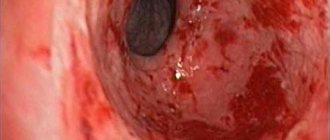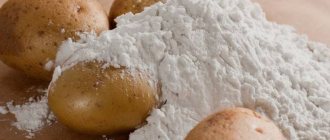Release form
The drug Phlogenzyme is available in the form of film-coated tablets, green, round, convex on both sides with a slight odor.
The tablets are produced in blisters of 20 pieces in a cardboard pack and in polyethylene bottles of 80 pieces. The drug is accompanied by instructions with a detailed description of the characteristics of the drug.
Each tablet contains active ingredients - Bromelain 450 IU, Trypsin 1440 IU and Rutoside 100 mg. The drug also contains a number of excipients, including lactose monohydrate.
Composition and release form
The medicine is produced in the form of coated tablets (20 pieces in one blister in a cardboard box or 800 pieces in a polyethylene bottle).
One tablet contains the following active ingredients:
- bromelain (450 units);
- trypsin (1440 units);
- rutin (10 mg)
And also impurity elements:
- magnesium stearate;
- talc;
- stearic acid;
- corn starch;
- lactose hydrate;
- purified water.
The fascia of the tablets consists of the following elements:
- triethyl citrate;
- macrogol 6000;
- methacrylic acid;
- methyl methacrylate copolymer;
- talc;
- vanillin.
Pharmacological properties
Phlogenzyme is a combination of enzymes (bromelain and trypsin) and rutin:
- Bromelain and trypsin promote the rapid breakdown of cellular fragments and metabolic products of the inflammatory process, rutin restores the permeability of vascular walls, which leads to a reduction in edema and hematomas.
- Phlogenzyme has anti-inflammatory, fibrinolytic, antiplatelet, immunomodulatory and decongestant effects, having a comprehensive effect on physiological and pathophysiological processes.
- Improves the functional state of blood cells and the vascular wall; reduces blood viscosity and the risk of blood clots in blood vessels, promotes the lysis of already formed blood clots. Improves microcirculation in areas of chronic inflammation, increases the delivery of oxygen and nutrients, thereby stimulating reparative processes in chronic diseases and in the postoperative period.
- As a result, swelling decreases, hematomas resolve faster and pain decreases.
- Phlogenzyme improves blood supply to the bronchi and lungs in chronic diseases of the upper respiratory tract, incl. caused by smoking; thins sputum, improves the function of the ciliated epithelium and restores the drainage function of the bronchi.
- The drug increases the effectiveness of antibiotic therapy, improves immunity, and activates the interferon system.
After taking Flogenzyme orally, the enzymes included in the drug are absorbed from the mucous membrane of the small intestine by resorption of intact molecules and, by binding to transport proteins in the blood, enter the bloodstream.
Then the enzymes, migrating along the vascular bed, accumulate in the area of the pathological process, regardless of the location in the body.
Indications for use
What is Phlogenzyme used for? The instructions for use of the medication state that it is used for the prevention and complex therapy of the following disorders:
- In dentistry: prevents complications in the postoperative period with purulent-inflammatory diseases of the maxillofacial area and tooth extraction. The drug is also used for rehabilitation and restoration of the maxillofacial area after surgical interventions, improves the integration of implants and osteosynthesis.
- In surgery: used for postoperative recovery and rehabilitation of patients (improves reparative processes and regeneration). The medication is very often used for postoperative purulent-inflammatory complications, prevents the formation of a keloid scar and the development of adhesions, and also reduces the risk of thromboembolic complications during long-term immobilization.
- In pulmonology: used in the treatment of pneumonia and chronic obstructive pulmonary disease.
- In traumatology: used for bone fractures, damage to ligaments and tendons, bruises and hematomas of soft tissue, as well as sports injuries, burns, to improve the integration of endoprostheses and osteosynthesis.
- In neurology: multiple sclerosis and ischemic stroke.
- In angiology: thrombosis (acute) of deep veins, lymphatic edema, post-thrombotic disease, thrombophlebitis of superficial veins, microcirculation disorders, obliterating atherosclerosis of the arteries of the legs and other chronic angiopathy.
- In cardiology: coronary artery disease, preventive measures for angina attacks, reducing the risk of recurrent heart attacks and vascular accidents.
- In rheumatology: rheumatic soft tissue lesions, rheumatoid arthritis, reactive arthritis and ankylosing spondylitis.
- In urology: chronic and acute inflammation of the genitourinary system (used for cystitis, urethritis, cystopyelitis and prostatitis).
- In gastroenterology: used for hepatitis.
- In gynecology: chronic and acute inflammatory processes in the pelvic organs (with adnexitis and salpingo-oophoritis), as well as vascular pathologies of the menopause, reducing the severity and frequency of complications of hormonal replacement treatment.
Instructions for use of the drug Phlogenzyme
How should I take Flogenzym medication correctly? Reviews from doctors and patients about this drug are mostly positive. According to them, this remedy quickly relieves inflammation and relieves pain.
The drug should be taken in tablets only orally half an hour before meals. It is recommended to take the medicine with 200 ml of plain water.
After surgery, it is advisable to use the medication from the 2nd or 3rd day. As mentioned above, the mentioned remedy is actively prescribed to patients after operations and injuries, as well as for acute inflammation.
The drug breaks down and then removes damaged tissue, promotes the resorption of hematomas, improves reparative processes and tissue trophism, reduces swelling and inflammation, reduces the risk of complications such as thrombosis, the development of adhesions, wound suppuration and the formation of a keloid scar.
To eliminate all of the above conditions, the patient is prescribed 3 tablets three times a day. They should be taken for two weeks.
If it is necessary to improve the recovery process and accelerate wound healing, therapy can be extended to 4 weeks or more. In this case, it is recommended to take 2 tablets three times a day. Prevention of diseases, combined use with antibiotics and hormones.
To prevent the occurrence of consequences after surgical interventions, the medication is prescribed in a long course in the amount of 2 tablets three times a day. The course of therapy must last for 28 days or more.
Very often, when prescribing antibiotics, the anti-inflammatory drug presented is used to increase the effectiveness of treatment and reduce negative consequences. The medication should be taken throughout therapy, 2 tablets three times a day.
If a doctor has prescribed a long course of hormonal treatment, then it is advisable to use the drug Flogenzyme to reduce the risk of developing thrombosis (2 tablets three times a day throughout the entire course of taking hormonal drugs).
During replacement therapy to reduce the risk of thrombosis of the leg veins, this drug should be taken in the amount of two tablets 3 times a day, but in repeated courses of 2 weeks with breaks of 3 weeks (4 times a year).
PHLOGENZYME
This drug was prescribed after gynecological surgery to prevent adhesive disease. The doctor praised it very much, saying that it was an excellent tool for postoperative rehabilitation, accelerates tissue healing, scar formation and, most importantly, prevents the formation of adhesions. I have undergone several operations and know what adhesions are and what unpleasant consequences they lead to. Therefore, there was no doubt whether to accept it or not. It had not been prescribed to me before.
The drug is expensive, about 1000 rubles (1 pack - 40 tablets), I took it for 2 weeks - 3 times a day.
For me, all the post-operative “joys” are not new, I went through this 4 times. Therefore, I have the opportunity to compare previous recovery periods with this one, during which I took Flogenzym. …
Contraindications
Before starting to take the tablets, the patient must consult a doctor and study the leaflet accompanying the drug. Contraindications to the use of the drug are:
- disorders of blood clotting function, tendency to bleeding;
- children under 15 years of age due to lack of experience in use and unproven safety;
- individual intolerance to the components of the drug;
- severe diseases of the liver and kidneys, accompanied by dysfunction of the organ;
- providing hemodialysis to patients.
It should also be noted that this drug should be used with extreme caution during hemodialysis.
Description of the drug "Flogenzyme"
The medicine is produced by the same pharmaceutical company as the previous one. To understand the difference between both drugs, you need to familiarize yourself with their composition - the main difference lies in the dosage and presence of the main components, as well as their quantity.
The main medicinal components of Phlogenzyme are:
- rutin – 100,
- bromelain – 450,
- trypsin – 1440.
The drug is endowed with strong anti-inflammatory properties, which help cure many diseases through complex therapy.
The medicine has proven itself in the treatment of the following diseases and pathological conditions:
- postoperative period – for the prevention of adhesions, suppuration, lymphostasis and edema,
- thrombosis and thrombophlebitis,
- arteritis of different localizations,
- arthritis of any severity,
- inflammation of the genitourinary system, which was caused by fungi, viruses or bacteria,
- chronic pathologies of the gallbladder or its ducts, liver and kidneys,
- pathologies of blood vessels and heart,
- inflammation of the genital organs caused by pathogenic microflora,
- climacteric syndrome,
- complications after hormonal treatment.
Only the attending physician has the right to prescribe Phlogenzyme, since the drug has a number of contraindications - they are similar to the previous drug.
This:
- children under 5 years of age,
- high sensitivity or intolerance to the components of the drug,
- during hemodialysis, tablets must be taken very carefully,
- low blood clotting,
- pathologies of the hematopoietic system.
There are no contraindications to the use of Phlogenzym during pregnancy and breastfeeding, but doctors say that it should be taken with extreme caution, with regular blood tests to monitor enzymes and the activity of some organs important to health.
Both drugs under consideration have significant differences regarding side effects.
For Phlogezim these include:
- change in stool
- increase in the number of bowel movements,
- bloating and frequent gas formation,
- allergies, which are expressed in the form of skin redness, rashes and burning sensations,
- nausea leading to vomiting,
- abdominal pain,
- general lethargy and weakness,
- dizziness.
If the patient immediately drinks a large dose of the drug, he may experience a feeling of fullness in the stomach. To avoid this symptom, you can divide it into 2-3 equal doses, which should be carried out after the same period of time.
If the patient experiences side effects from the drug, the doctor will prescribe a lower dosage or completely replace the medication with an analogue. In this case, therapy is not required to get rid of side effects.
Use during pregnancy and lactation
There is no experience with the use of Flogenzyme among pregnant women, and the safety of the tablets for the mother and fetus has not been established. In view of this information, the drug Flogenzyme is not prescribed to expectant mothers.
The use of the drug during breastfeeding is not recommended, since the ability of the active ingredients of the tablets to be excreted in breast milk is unknown. If therapy with the drug is necessary for a nursing mother, lactation should be stopped.
Interaction of the drug with other drugs
The drug Flogenzyme can be prescribed simultaneously with antibiotics and sulfonamides. With this drug interaction, the effectiveness of the drugs increases, and the therapeutic effect increases accordingly.
Tablets are not recommended to be taken simultaneously with antacids and enterosorbents, as these drugs reduce the absorption of the active substances of Phlogenzyme and reduce its therapeutic effect.
The drug Flogenzyme is prescribed only as part of complex therapy; these tablets cannot replace full treatment with antibiotics or antibacterial drugs.
The drug does not have a depressing effect on the central nervous system and does not slow down the speed of psychomotor reactions.
Phlogenzyme - instructions, composition, dosage, side effects of use
Phlogenzyme
Phlogenzym Mucos Pharma (Germany)
Basic physical and chemical characteristics : round, wallpaper-convex, smooth tablets of greenish-yellow color, with a characteristic odor;
Compound. 1 tablet contains bromelain 90 mg (450 450 FIP-Od.), trypsin 48 mg (24 μcat), rutin 100 mg;
other ingredients: lactose, corn starch, magnesium stearate, stearic acid, purified water, colloidal silicon dioxide, talc;
tablet core: macrogol 6000, methacrylic acid and methyl methacrylate copolymer, talc, triethyl citrate, vanillin.
Release form of the medicine. Film-coated tablets.
Pharmacotherapeutic group. Medicines used for pathology of the musculoskeletal system. ATC code M09A B
Action of the medicine.
Phlogenzyme improves microcirculation, reduces the severity of edema and pain syndromes. Reduces blood viscosity, prevents the formation and promotes the resorption of already formed blood clots. Increases the effectiveness of antibiotics and reduces the side effects of antibiotic therapy.
Indications for use. Acute inflammatory processes and exacerbation of chronic inflammatory and degenerative diseases (as part of complex therapy).
Injuries, injuries, post-operative conditions, sports injuries, burns, inflammation of veins, arteries and lymphatic vessels, post-traumatic lymphedema.
Rheumatic diseases: rheumatism of soft tissues (muscular rheumatism), inflammation of tendons, pain in the shoulders and shoulder girdles, degenerative diseases of the joints and spine, osteoarthritis.
Zinkhofen - instructions, composition, dosage, side effects of use
Acute inflammation in the oral cavity, respiratory tract, urinary and genital organs (alone or in combination with antibiotics and other treatments).
Method of use and dose . As a rule, it is recommended to take 6 tablets of Phlogenzyme daily - 3 tablets twice or 2 tablets three times a day. In special cases (in severe cases of the disease or during intensive treatment in the case of inflammatory diseases), you can take up to 12 tablets daily in 3-4 doses. For children, the dose of the drug is calculated depending on body weight and is 1 tablet per 10 kg of body weight per day. The course of therapy for acute diseases is from 2 weeks until recovery, and for exacerbations of chronic diseases, treatment continues until there are clear signs of remission.
It is recommended to take the tablets at least 30 minutes before meals, without chewing, with plenty of water (200 ml).
Side effect . In some cases, slight changes in the consistency and smell of stool were observed. Rarely, an allergic reaction (eg skin rash) may occur, which disappears after stopping treatment with Phlogenzyme. Large doses of the drug can cause a temporary feeling of fullness in the stomach, flatulence and, very rarely, discomfort. This can be avoided by dividing the daily dose into a large number of single doses - four or five.
Embiquin - information about the drug
Contraindications . Individual hypersensitivity to the components of the drug Phlogenzyme. Severe congenital or acquired blood clotting disorders (hemophilia, severe liver damage).
Exceeding the permissible dose of the drug (overdose). Even with long-term use of high doses of Phlogenzyme, no toxic effects have been identified; bowel movement disorders and diarrhea are possible, which disappear 1-3 days after discontinuation of the drug without additional treatment.
Features of use. During dialysis, as well as in the preoperative period, the drug Flogenzyme should be taken under the supervision of a physician. During pregnancy and lactation, the use of Phlogenzyme should be treated with the usual caution for this condition and under the supervision of a physician.
Interaction with other drugs. When Flogenzyme was taken simultaneously with other medications, no cases of incompatibility were observed. In the case of simultaneous use with antibiotics, the drug Flogenzyme increases their concentration in the blood plasma and the site of inflammation.
Features of conditions, shelf life and sales. . Keep out of reach of children, in a dark place at room temperature (15-25 °C). Shelf life: 3 years.
Sources of information: rsml.med.by, mednet.by, drugs.com, webmd.com.
Analogues of the drug Flogenzym
Today, there are no structural analogues of the drug “Phlogenzyme” with the same active ingredients. And if you were unable to purchase the mentioned medication, you should immediately contact your doctor. The doctor is obliged to select a replacement medicine with similar properties (for example, Wobenzym, Serox, Serrata).
Such medications may contain completely different active elements than Flogenzyme, but have a similar effect.
How to take Phlogenzyme tablets correctly? Instructions for use and dosage.
They are prescribed to take 6-12 tablets daily (three tablets twice a day, or three tablets four times a day). The largest daily dose of medication (in the most severe cases) does not exceed twelve tablets. For acute infectious diseases, the therapeutic course of taking Flogenzyme often lasts from two weeks until the patient completely recovers. If a chronic disease becomes severely aggravated, then treatment should be continued until a pronounced remission occurs. Flogenzyme tablets should be taken thirty to sixty minutes before meals, and they should be washed down with plenty of boiled water.









